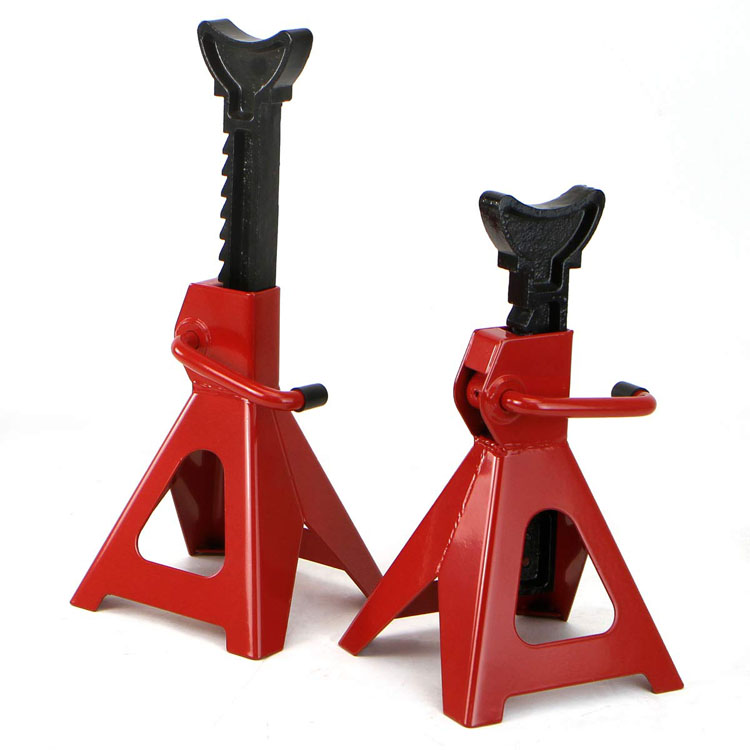Are jack stands safe?
Yes, jack stands are safe when used correctly—but improper use can lead to catastrophic failures. Here’s how to ensure maximum safety:

✅ When Jack Stands Are Safe
- Proper Weight Rating
- Stands must support at least 2x the weight of the lifted portion of your car (e.g., 3-ton stands for a 1.5-ton vehicle).
- Check your car’s weight in the owner’s manual.
- Correct Placement
- Only place stands on manufacturer-approved lift points (usually reinforced frame rails or subframes).
- Never use on: oil pans, suspension arms, or plastic panels.
- Stable Surface
- Use on level concrete/asphalt—never dirt, gravel, or sloped ground.
- Redundancy
- Keep the jack lightly touching (but not supporting) the car as a backup.
- For extra safety, slide sturdy wheel ramps under tires after lifting.
When Jack Stands Fail (Common Mistakes)
- Overloading: Using 2-ton stands for a 3-ton SUV.
- Poor Positioning: Placing stands on weak/unstable points.
- Cheap/Defective Stands: Avoid no-name brands—look for SAE/ASME certification.
- Ignoring Wear: Rusty, cracked, or wobbly stands should be replaced.
Real-World Safety Tips
1. Test Before Going Under
- Shake the car vigorously—if it moves, reposition the stands.
- Use Locking Stands
- Modern stands with pins or ratchets are safer than older screw-type designs.
- Never Work Alone
- Have someone nearby in case of emergencies.
Alternatives for Extra Safety
- QuickJack (portable lift system)
- Wheel Ramps (for oil changes if clearance allows)
- Professional Lift (for major work—best option)
Bottom Line: Jack stands are safe if used properly, but cutting corners can be deadly. If unsure, invest in a quality lift system or visit a professional.

